Panzerbuchse 38 anti-tank rifle
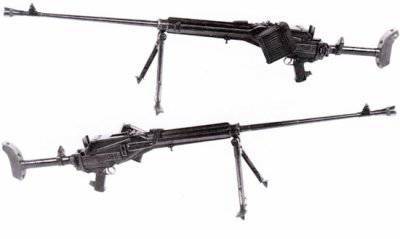 Before starting the Second World War, it was decided to strengthen the anti-tank defenses with anti-tank guns, but the old Mauser didn’t have enough for this purpose. Firstly, the armored vehicle itself has changed, and secondly, the requirements for anti-tank guns have also changed, at least in Germany and, as time has shown, have changed not for the better, but we will not run ahead. In general, the main parameters were developed for the 1937 year, under which the new weapon should have been suitable. And already in 1938, the sample was presented, which was later adopted for service. Designer Brauer, who at that time was working for Gustloff Werke, located in Suhl, created this model of weapon. The sample turned out to be the same as a single-shot one, but at the same time it was distinguished by a much higher rate of fire, which was demonstrated in the tests of this sample, which was named Panzerbuchse 38 or simply PzB 38.
Before starting the Second World War, it was decided to strengthen the anti-tank defenses with anti-tank guns, but the old Mauser didn’t have enough for this purpose. Firstly, the armored vehicle itself has changed, and secondly, the requirements for anti-tank guns have also changed, at least in Germany and, as time has shown, have changed not for the better, but we will not run ahead. In general, the main parameters were developed for the 1937 year, under which the new weapon should have been suitable. And already in 1938, the sample was presented, which was later adopted for service. Designer Brauer, who at that time was working for Gustloff Werke, located in Suhl, created this model of weapon. The sample turned out to be the same as a single-shot one, but at the same time it was distinguished by a much higher rate of fire, which was demonstrated in the tests of this sample, which was named Panzerbuchse 38 or simply PzB 38. 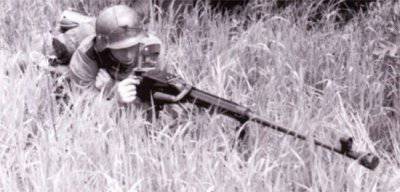 If we talk about the design of weapons, it was a massive single-shot anti-tank gun with a semi-automatic reloading mechanism. Speaking more simply, when firing, the bolt opened, and the cartridge case was ejected automatically, but to insert a new cartridge and close the bolt was required manually. Weapon automatics were built in such a way as to reduce the recoil effect as much as possible while shooting, while increasing the practical rate of fire was a second matter, although much attention was paid to it. Automatic weapons built according to the scheme with a long stroke of the barrel when using recoil. That is, when fired, the barrel and bolt were coupled together, the barrel bore was naturally locked, during the shot the powder gases pushed both the bolt and the barrel, which led to their joint movement backwards. Up to the stop, the barrel and bolt are rolled back together, after that the barrel bore is unlocked, the bolt is fixed, and the barrel, under the influence of the return spring, “moves” forward, freeing the cartridge case from the chamber. After that, the pens need to insert a new cartridge and lock the barrel bore, back manually. Despite the fact that half of the operations had to be done by hand, the weapon’s rate of fire increased to 12 rounds per minute, and the fact that on both sides of the weapon there were attachments to which boxes were placed with ammunition was significant, so everything was under hand u arrow.
If we talk about the design of weapons, it was a massive single-shot anti-tank gun with a semi-automatic reloading mechanism. Speaking more simply, when firing, the bolt opened, and the cartridge case was ejected automatically, but to insert a new cartridge and close the bolt was required manually. Weapon automatics were built in such a way as to reduce the recoil effect as much as possible while shooting, while increasing the practical rate of fire was a second matter, although much attention was paid to it. Automatic weapons built according to the scheme with a long stroke of the barrel when using recoil. That is, when fired, the barrel and bolt were coupled together, the barrel bore was naturally locked, during the shot the powder gases pushed both the bolt and the barrel, which led to their joint movement backwards. Up to the stop, the barrel and bolt are rolled back together, after that the barrel bore is unlocked, the bolt is fixed, and the barrel, under the influence of the return spring, “moves” forward, freeing the cartridge case from the chamber. After that, the pens need to insert a new cartridge and lock the barrel bore, back manually. Despite the fact that half of the operations had to be done by hand, the weapon’s rate of fire increased to 12 rounds per minute, and the fact that on both sides of the weapon there were attachments to which boxes were placed with ammunition was significant, so everything was under hand u arrow.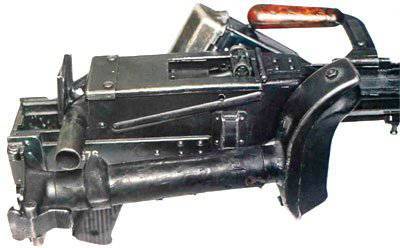 It is impossible to keep silent about the fact that a lot of very interesting technical solutions were used in the weapon, which had a positive effect on the weight and dimensions of the weapon, as well as reduced its production cost. First of all, a large number of stamped parts should be noted, and after all, the yard was 1938 year. But, in my opinion, the most important feature of the weapon, which makes this specimen original, is that the return spring of the barrel, due to which the recoil was softened when fired, was located in the folding butt of the weapon, or rather in the butt tube. Of course, the solution does not seem to be quite normal, but under the condition that a sufficiently powerful ammunition was used, and the PTR barrel had a good weight, it worked flawlessly. And the butt in the unfolded state was fixed quite reliably. In general, the idea is original and interesting enough, for example, I have been searching for the return spring of the trunk for a long time, until I found out where it is located. But for the time being we will break away from the weapon itself, and there are still enough interesting moments in it, and we will switch to the cartridge used in the Panzerbuchse 38 MFR, especially since ammunition is even more interesting than a weapon.
It is impossible to keep silent about the fact that a lot of very interesting technical solutions were used in the weapon, which had a positive effect on the weight and dimensions of the weapon, as well as reduced its production cost. First of all, a large number of stamped parts should be noted, and after all, the yard was 1938 year. But, in my opinion, the most important feature of the weapon, which makes this specimen original, is that the return spring of the barrel, due to which the recoil was softened when fired, was located in the folding butt of the weapon, or rather in the butt tube. Of course, the solution does not seem to be quite normal, but under the condition that a sufficiently powerful ammunition was used, and the PTR barrel had a good weight, it worked flawlessly. And the butt in the unfolded state was fixed quite reliably. In general, the idea is original and interesting enough, for example, I have been searching for the return spring of the trunk for a long time, until I found out where it is located. But for the time being we will break away from the weapon itself, and there are still enough interesting moments in it, and we will switch to the cartridge used in the Panzerbuchse 38 MFR, especially since ammunition is even more interesting than a weapon. The Panzerbuchse 38 anti-tank rifle used cartridges with the metric designation 7,62 x95 better known as Patrone 318. Yes, yes, the weapon was 7,62 caliber of millimeter, but let it not mislead you, because ... A bullet of such a small caliber managed to penetrate 30 millimeters of armor from a distance of 10 meters and 25 millimeters from a distance of 300 meters. How is this possible at the first glance at this ammunition, or rather at its huge sleeve, in comparison with the bullet. The powder charge of the cartridge accelerates a bullet with a caliber of 7,62 millimeter to a speed of more than 1200 meters per second, the bullet obtained such armor-piercing abilities through the use of a tungsten alloy core. The basis for the cartridge served as the previous version of the "anti-tank" cartridge, which was used in the Mauser anti-tank gun. The sleeve was pereobzhi under a smaller caliber, which allowed us to disperse a missile projectile huge for such an easy bullet powder to huge speeds for those times.
The Panzerbuchse 38 anti-tank rifle used cartridges with the metric designation 7,62 x95 better known as Patrone 318. Yes, yes, the weapon was 7,62 caliber of millimeter, but let it not mislead you, because ... A bullet of such a small caliber managed to penetrate 30 millimeters of armor from a distance of 10 meters and 25 millimeters from a distance of 300 meters. How is this possible at the first glance at this ammunition, or rather at its huge sleeve, in comparison with the bullet. The powder charge of the cartridge accelerates a bullet with a caliber of 7,62 millimeter to a speed of more than 1200 meters per second, the bullet obtained such armor-piercing abilities through the use of a tungsten alloy core. The basis for the cartridge served as the previous version of the "anti-tank" cartridge, which was used in the Mauser anti-tank gun. The sleeve was pereobzhi under a smaller caliber, which allowed us to disperse a missile projectile huge for such an easy bullet powder to huge speeds for those times. 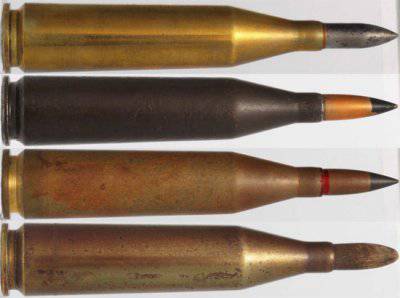 The first version of the cartridge, of course, was armor-piercing and not just armor-piercing, but in a steel shell, movement along the rifled barrel was possible due to the fact that the bullet had a diameter equal to the rifling in the barrel bore, and the rotational movement was provided by the copper belt around the bullet. The bullet in this version of the cartridge had a weight of 14,6 grams, while the weight of the powder charge was even larger than in the old version of the cartridge under 13 millimeters and was 14,9 grams. It is also noteworthy that when using this light bullet you could safely shoot in a straight line at a distance of up to 400 meters. In fact, there were a lot of variants of cartridges, variations with bullet shells, cores, and shapes were virtually endless, with many of them even going into series. But an armor-piercing bullet is an armor-piercing bullet, it is of no particular interest, but we will consider more interesting options. So, in addition to ammunition intended for penetration of armor technology, there were options with bullets, which even contained irritating substances. In fact, the design of these bullets was similar to tracer ammunition, that is, from the back of the bullet the substance was pressed, which determined the action of the bullet. By the way, tracer bullets were also. However, the principle was somewhat different from the tracer bullet. The bottom line is that there were two compartments in the pool, in which chemicals were pressed in, which, when mixed, began to release irritating mucous gas. Despite the rather interesting idea of placing an irritating compound in a pool with relatively small dimensions, and even more so a successful test of such a munition, such a cartridge has not spread. The reasons lie in the short shelf life of the munition, a small amount of irritant, and also in frequent cases when the whole thing was mixed before the shot or mixing did not occur when the bullet was destroyed. I remember the words from the famous movie “Grenades: anti-fragment fragmentation. About 50 on 50 are misfired ... ”But if you look at it in general, several such bullets that pierced the armor and got into the armored vehicles should have forced the crew to jump out into the air one by one, but already here the machine guns could say a few words, that the idea was very good. Do not think that I admire fascist Germany, it’s just a weapon admiration, and, as you know, it doesn’t have a personal opinion on which side to fight. The only and most important negative quality of this ammunition was that it was a dead end, that is, there was simply no place for it to develop, which led later to the transition to other cartridges for anti-tank guns. Let's return to the Panzerbuchse 38 anti-tank rifle.
The first version of the cartridge, of course, was armor-piercing and not just armor-piercing, but in a steel shell, movement along the rifled barrel was possible due to the fact that the bullet had a diameter equal to the rifling in the barrel bore, and the rotational movement was provided by the copper belt around the bullet. The bullet in this version of the cartridge had a weight of 14,6 grams, while the weight of the powder charge was even larger than in the old version of the cartridge under 13 millimeters and was 14,9 grams. It is also noteworthy that when using this light bullet you could safely shoot in a straight line at a distance of up to 400 meters. In fact, there were a lot of variants of cartridges, variations with bullet shells, cores, and shapes were virtually endless, with many of them even going into series. But an armor-piercing bullet is an armor-piercing bullet, it is of no particular interest, but we will consider more interesting options. So, in addition to ammunition intended for penetration of armor technology, there were options with bullets, which even contained irritating substances. In fact, the design of these bullets was similar to tracer ammunition, that is, from the back of the bullet the substance was pressed, which determined the action of the bullet. By the way, tracer bullets were also. However, the principle was somewhat different from the tracer bullet. The bottom line is that there were two compartments in the pool, in which chemicals were pressed in, which, when mixed, began to release irritating mucous gas. Despite the rather interesting idea of placing an irritating compound in a pool with relatively small dimensions, and even more so a successful test of such a munition, such a cartridge has not spread. The reasons lie in the short shelf life of the munition, a small amount of irritant, and also in frequent cases when the whole thing was mixed before the shot or mixing did not occur when the bullet was destroyed. I remember the words from the famous movie “Grenades: anti-fragment fragmentation. About 50 on 50 are misfired ... ”But if you look at it in general, several such bullets that pierced the armor and got into the armored vehicles should have forced the crew to jump out into the air one by one, but already here the machine guns could say a few words, that the idea was very good. Do not think that I admire fascist Germany, it’s just a weapon admiration, and, as you know, it doesn’t have a personal opinion on which side to fight. The only and most important negative quality of this ammunition was that it was a dead end, that is, there was simply no place for it to develop, which led later to the transition to other cartridges for anti-tank guns. Let's return to the Panzerbuchse 38 anti-tank rifle.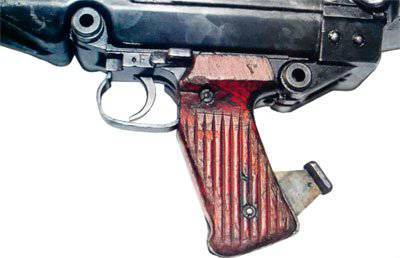 Despite the fact that the weapon had a large enough weight - more than 16 kilogram without cartridges, it was quite convenient to use. For carrying the weapon in the center of gravity, the handle was located, the controls were arranged so that the shooter made a minimum of movements when reloading. On the left side above the trigger there was a fuse switch, in addition, the safety of the weapon was also provided by an automatic fuse, which was a key (pedal?) On the back side of the handle. Sufficiently large dimensions of the weapon (1616 millimeters) were compensated by the ability of the butt to fold, naturally, with a folded butt, firing was impossible, if only because the recoil spring of the barrel was located in the butt. The barrel had a length of 1260 millimeters. On the trunk there was a flame arrester, the designers did not endow the gun with a muzzle brake-compensator of recoil.
Despite the fact that the weapon had a large enough weight - more than 16 kilogram without cartridges, it was quite convenient to use. For carrying the weapon in the center of gravity, the handle was located, the controls were arranged so that the shooter made a minimum of movements when reloading. On the left side above the trigger there was a fuse switch, in addition, the safety of the weapon was also provided by an automatic fuse, which was a key (pedal?) On the back side of the handle. Sufficiently large dimensions of the weapon (1616 millimeters) were compensated by the ability of the butt to fold, naturally, with a folded butt, firing was impossible, if only because the recoil spring of the barrel was located in the butt. The barrel had a length of 1260 millimeters. On the trunk there was a flame arrester, the designers did not endow the gun with a muzzle brake-compensator of recoil.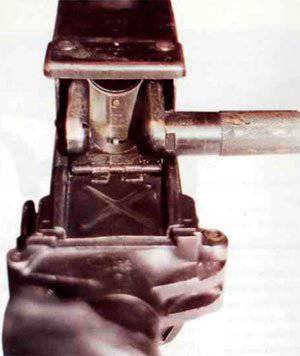 Generally speaking, the weapon turned out to be excellent, but it turned out to be excellent only on paper and in ideal conditions. As soon as the matter touched mass production and field tests, a thousand problems emerged. First of all, the question arose about the lack of reliability of the Panzerbuchse 38 anti-tank gun under combat conditions due to its strong susceptibility to pollution. Frequent failures of the weapon negated all its positive qualities, and many of the failures could be solved only with a kick, which was not always possible to accomplish. Moreover, when it was calculated how much one unit of an anti-tank gun would cost in production, it was concluded that the weapon was clearly not worth so much. The fact is that, despite the large number of parts that were simple and cheap to manufacture, the Panzerbuchse 38 anti-tank gun had a lot of elements that were rather difficult to manufacture, which negated all the savings and cheapness. In addition, the practical rate of fire did not work for many, and there was a demand to add store supplies to weapons. This requirement was immediately satisfied in the form of a drum shop, since there was nothing difficult about it, but this modernization added even more problems to the anti-tank rifle. Despite all these shortcomings, the weapons still went into mass production, and it was with him that Germany began World War II. Naturally, the production of this sample was short-lived and, in a short time, it was replaced by another more sophisticated model of the anti-tank gun 39 of the year.
Generally speaking, the weapon turned out to be excellent, but it turned out to be excellent only on paper and in ideal conditions. As soon as the matter touched mass production and field tests, a thousand problems emerged. First of all, the question arose about the lack of reliability of the Panzerbuchse 38 anti-tank gun under combat conditions due to its strong susceptibility to pollution. Frequent failures of the weapon negated all its positive qualities, and many of the failures could be solved only with a kick, which was not always possible to accomplish. Moreover, when it was calculated how much one unit of an anti-tank gun would cost in production, it was concluded that the weapon was clearly not worth so much. The fact is that, despite the large number of parts that were simple and cheap to manufacture, the Panzerbuchse 38 anti-tank gun had a lot of elements that were rather difficult to manufacture, which negated all the savings and cheapness. In addition, the practical rate of fire did not work for many, and there was a demand to add store supplies to weapons. This requirement was immediately satisfied in the form of a drum shop, since there was nothing difficult about it, but this modernization added even more problems to the anti-tank rifle. Despite all these shortcomings, the weapons still went into mass production, and it was with him that Germany began World War II. Naturally, the production of this sample was short-lived and, in a short time, it was replaced by another more sophisticated model of the anti-tank gun 39 of the year.An interesting point in stories This weapon was also the fact that they even tried to use it as an anti-aircraft gun, which naturally did not produce any result. Many of the Panzerbuchse 38 anti-tank guns were also installed on the machine tools, which in my opinion was just a disgrace, since the recoil of the weapon was much less than that of the previous Mauser, and with the machine the weapon lost its mobility, so the standard bipods with which the MFR was equipped quite enough.
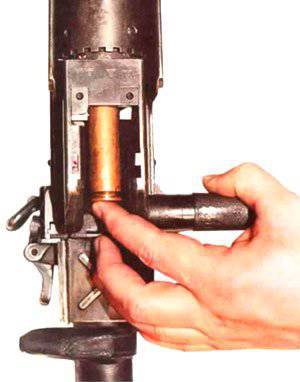 Despite the fact that the Panzerbuchse 38 century was short-lived, it cannot be denied that this sample made a significant contribution to the development of weapons. The original placement of weapon elements, an interesting scheme of automation, testing options for reducing recoil when firing, ammunition, in the end, all this was used in other samples, so even if the Panzerbuchse 38 serial production of PTR did not go, to say that the weapon was useless impossible. In total, 1600 units of these weapons were released and this, together with those that were issued for testing.
Despite the fact that the Panzerbuchse 38 century was short-lived, it cannot be denied that this sample made a significant contribution to the development of weapons. The original placement of weapon elements, an interesting scheme of automation, testing options for reducing recoil when firing, ammunition, in the end, all this was used in other samples, so even if the Panzerbuchse 38 serial production of PTR did not go, to say that the weapon was useless impossible. In total, 1600 units of these weapons were released and this, together with those that were issued for testing. I don’t know how anyone, but personally the similar samples to me are most interesting, because in them, as well as samples from the late nineteenth and early twentieth century, you can find a lot of original ideas and solutions, which can then be found in other samples that are widely used . Still, do not say, and the Germans are an economic people, almost everything that was implemented in this unit later was used. So all the costs of development and production have paid off with interest already in other types of weapons, even without taking into account the participation of these 1600 weapons in combat operations. In the end, this sample showed what exactly is needed to create an effective and convenient anti-tank gun, revealed the main negative qualities of this class of weapons in general, which was taken into account in subsequent models of anti-tank guns.
- Karasik Kirill
- weaponland.ru
- PTR Boys
The first anti-tank gun Mauser T-Gewehr M1918
Panzerbuchse 38 anti-tank rifle
Information